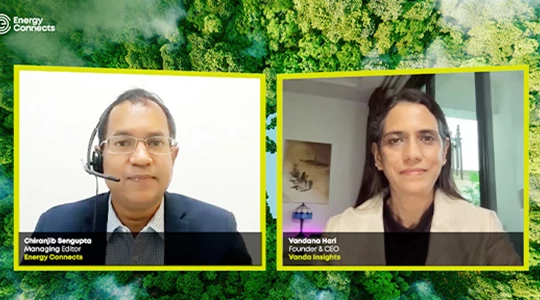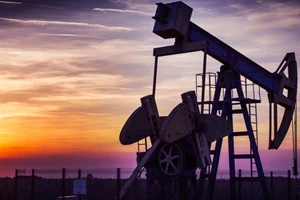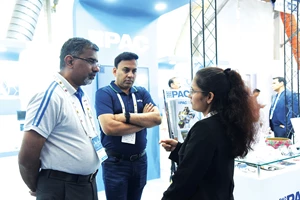thyssenkrupp Uhde and Johnson Matthey forge path for low-carbon blue ammonia solutions
Leading construction engineering provider thyssenkrupp Uhde and Johnson Matthey (JM), a sustainable technologies firm, have announced today the signing of a Memorandum of Understanding (MoU) to jointly offer a fully integrated low-carbon blue ammonia solution.
"With this strong partnership we further broaden our portfolio of climate-friendly solutions and can help our customers even better to reach their sustainability goals," Lucretia Löscher, Chief Operating Officer of thyssenkrupp Uhde, said in a statement.
Ammonia's role has expanded beyond being a vital ingredient for producing fertilizer in the agricultural sector. Now, it is used as a decarbonized carrier and supplier of hydrogen energy because it is easier to store and transport when compared to pure hydrogen, in efforts to reduce CO2 emissions.
The role of ammonia fuel in the energy transition
Low-carbon ammonia movement can utilize existing infrastructure, making it a leading energy transition solution. It is ready to capture, store, and ship vast quantities of hydrogen for use in the power, shipping sector, and industrial value chains globally.
thyssenkrupp Uhde has licensed, engineered, and constructed over 130 ammonia plants worldwide since 1928. It is market-leading in plants greater than 3,000 metric tonnes per day with its unique Uhde dual-pressure technology.
JM's LCH technology uses the autothermal reformer alone or alongside the gas-heated reformer. This technology was utilized in several of the world's first large-scale blue hydrogen projects, including BP's H2Teesside, a 700-megawatt low-carbon hydrogen production plant, and the H2H Saltend project with Equinor and Linde for a 600-megawatt low-carbon hydrogen production plant.
Alberto Giovanzana, Managing Director – Catalyst Technologies at JM, highlighted, "We know multiple routes are needed in the energy transition, and ammonia provides several options because it can be used directly in power and shipping industries, and as a hydrogen carrier to safely transport hydrogen to areas it is not easy to produce."
KEEPING THE ENERGY INDUSTRY CONNECTED
Subscribe to our newsletter and get the best of Energy Connects directly to your inbox each week.
By subscribing, you agree to the processing of your personal data by dmg events as described in the Privacy Policy.
More renewables news

TE H2 and VERBUND sign MoU with Tunisia for major green hydrogen project
May 30, 2024
New Big Nuclear Reactors Get Support From Biden Administration
May 29, 2024
World’s Largest Nuclear Plant Sits Idle While Energy Needs Soar
May 28, 2024
Waste-to-Fuel Company That Raised $1 Billion Verges on Collapse
May 28, 2024
Toyota Bets on Alternate-Fuel Engines in an Electric Future
May 28, 2024
Uniper and NGEN to construct battery energy storage system in Germany
May 28, 2024
China’s Second-Biggest Automaker Is Part of New Egyptian EV Push
May 27, 2024
Insurers Are Working to Shore Up the $2 Billion Carbon Offset Market
May 24, 2024
US to Outline Vision for Carbon Offsets Dogged by Controversy
May 24, 2024
Contamination Fears Stoked By Water Leak at German Nuclear Site
May 24, 2024
Hydrogen and ammonia to play pivotal roles in the energy transition
May 21, 2024
Sarawak Energy aims to become the renewable powerhouse of ASEAN
May 20, 2024
LNG to play a key role as energy transition picks up pace
May 16, 2024
Expanding clean power infrastructure vital for a low-carbon future
May 15, 2024
Fuelling the Future: Boilermakers and the Hydrogen Revolution
May 14, 2024
More women in energy vital to the industry’s success
Mar 06, 2024
India’s energy sector presents lucrative opportunities for global companies
Jan 31, 2024
Oil India charts the course to ambitious energy growth
Jan 25, 2024
Maritime sector is stepping up to the challenges of decarbonisation
Jan 08, 2024
COP28: turning transition challenges into clean energy opportunities
Dec 08, 2023Partner content

Ebara Elliott Energy offers a range of products for a sustainable energy economy

Essar outlines how its CBM contribution is bolstering for India’s energy landscape

Positioning petrochemicals market in the emerging circular economy

Navigating markets and creating significant regional opportunities with Spectrum































